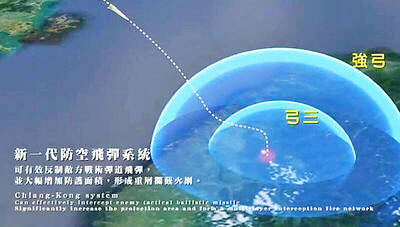A fresh flood of refugees poured out of Pakistan’s Swat valley yesterday as authorities temporarily relaxed a curfew ahead of a looming ground onslaught against the Taliban.
The UN refugee agency said more than 834,000 civilians had been registered since May 2, adding to another 555,000 civilians who fled escalating violence last year.
But not all the displaced people have registered and a minister in the Northwest Frontier Province (NWFP), where Swat is situated, estimated the fresh displacements at 1.5 million, with nearly 1 million more still stuck in their homes.
Pakistani Prime Minister Yousuf Raza Gilani called for “winning the hearts and minds” of the uprooted people, saying: “It will be very unfortunate if we win militarily but lose publicly.”
Security forces temporarily lifted the curfew in parts of Swat and the nearby districts of Lower Dir and Buner from 6am to 2pm yesterday to allow the population to flee the intense fighting between the military and the Taliban militants.
Nearly 15,000 troops with air and artillery support are trying to eliminate up to 5,000 hardcore insurgents. But so far urban warfare has been avoided to prevent civilian casualties.
Fresh battles are expected in Mingora, Swat’s main town, where tens of thousands of people are still believed to be stranded.
The army said the offensive was “progressing well” and soldiers had established a foothold in Peuchar, a key militant bastion where airborne troops were dropped this week for search-and-destroy missions.
UN High Commissioner for Refugees Antonio Guterres visited one of the makeshift refugee camps on Thursday and sought international support for the displaced people.
Officials described the mass exodus as the largest since the country gained independence in 1947.

LIMITS: While China increases military pressure on Taiwan and expands its use of cognitive warfare, it is unwilling to target tech supply chains, the report said US and Taiwan military officials have warned that the Chinese People’s Liberation Army (PLA) could implement a blockade within “a matter of hours” and need only “minimal conversion time” prior to an attack on Taiwan, a report released on Tuesday by the US Senate’s China Economic and Security Review Commission said. “While there is no indication that China is planning an imminent attack, the United States and its allies and partners can no longer assume that a Taiwan contingency is a distant possibility for which they would have ample time to prepare,” it said. The commission made the comments in its annual

DETERMINATION: Beijing’s actions toward Tokyo have drawn international attention, but would likely bolster regional coordination and defense networks, the report said Japanese Prime Minister Sanae Takaichi’s administration is likely to prioritize security reforms and deterrence in the face of recent “hybrid” threats from China, the National Security Bureau (NSB) said. The bureau made the assessment in a written report to the Legislative Yuan ahead of an oral report and questions-and-answers session at the legislature’s Foreign Affairs and National Defense Committee tomorrow. The key points of Japan’s security reforms would be to reinforce security cooperation with the US, including enhancing defense deployment in the first island chain, pushing forward the integrated command and operations of the Japan Self-Defense Forces and US Forces Japan, as

INTERCEPTION: The 30km test ceiling shows that the CSIST is capable of producing missiles that could stop inbound missiles as they re-enter the atmosphere Recent missile tests by the Chungshan Institute of Science and Technology (CSIST) show that Taiwan’s missiles are capable of intercepting ballistic missiles as they re-enter the atmosphere and pose a significant deterrent to Chinese missile threats, former Hsiung Feng III missile development project chief engineer Chang Cheng (張誠) said yesterday. The military-affiliated institute has been conducting missile tests, believed to be related to Project Chiang Kung (強弓) at Pingtung County’s Jiupeng Military Base, with many tests deviating from past practices of setting restriction zones at “unlimited” and instead clearly stating a 30.48km range, Chang said. “Unlimited” restrictions zones for missile tests is

PUBLIC SAFETY: The nationwide distribution campaign aims to enhance society’s overall understanding of threats and bolster defense awareness, an official said The latest edition of the National Public Safety Guide is being mailed to all citizens starting today to foster public awareness of self-defense in the event of war or natural disasters, the Ministry of National Defense said yesterday. “The guides will be disseminated to the public to enhance society’s overall understanding of threats and bolster defense awareness, demonstrating the government’s emphasis on people’s safety and its determination to pursue self-defense,” All-out Defense Mobilization Agency Director Shen Wei-chih (沈威志) said at the ministry’s news conference. The nationwide distribution campaign was planned according to President Lai William’s (賴清德) Sept. 20 directive, he said, adding